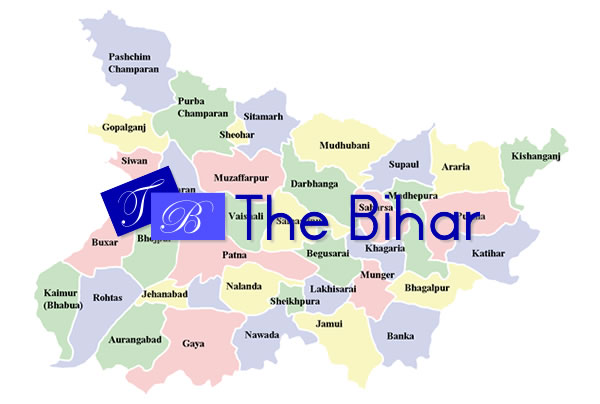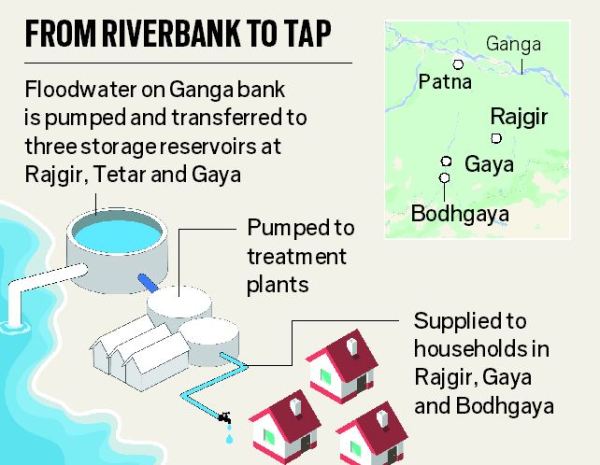Darbhanga
5 min readDarbhanga district is one of the thirty-seven districts of Bihar state, India, and Darbhanga town is the administrative headquarters of this district. Darbhanga district is a part of Darbhanga Division. The district is bounded on the north by Madhubani district, on the south by Samastipur district, on the east by Saharsa district and on the west by Sitamarhi and Muzaffarpur districts.The area of the district is 2,279 km2.
Geography
The district has a vast alluvial plain devoid of any hills. There is a gentle slope from north to south with a depression on the centre. The District can be divided into four natural divisions. The eastern part consists of Ghanshyampur, Biraul and Kusheshwarsthan blocks. This part contains fresh silt deposited by the Kosi River. This region was under the influence of Kosi floods till the construction of Kosi embankment during the Second Five Year Plan. It contains large tracts of sandy land covered with wild marshes. The second part comprises the regions lying south of the Burhi Gandak River and is the most fertile area in the district. It is at a higher level than the other parts of the district and contains very few marshlands. This part is well suited to the rabi crops. The third natural region is the doab between the rivers, Burhi Gandak and Baghmati and consists of low-lying areas dotted over by marshes. This region gets flooded almost every year. The fourth division consists the Sadar sub-division of the district. This region is watered by numerous streams and contains some uplands.
Rivers
Though numerous rivers originating in the Himalayas water this district, it has four major river systems, the Baghmati, the little Baghmati, the Kamla and the Tiljuga. The Bagmati, enters this district from Muzaffarpur district, forms a natural boundary between the district and Samastipur district and pursues a southeasterly course till it joins the Burhi Gandak River near Rosera. The little Bagmati enters the district from Madhubani district near Pali and turns past Darbhanga town down to Hayaghat, where it joins the Baghmati proper. The Kamla River enters the district at Singar Pandaul, and flowing east of Darbhanga town, joins the Tiljuga at the southeastern corner of Rosera block. The Tiljuga skirts the eastern boundary of the district.
Climate
The climate of this district is dry. There are three well-marked seasons in this district, the winter, the summer & the rainy season. The winter season starts in November and continues till February, though March is also pleasant. Westerly winds begin to blow in the second half of March and temperature rises considerably. May is the hottest month when the temperature goes up to 42°C. Rain sets in towards the middle of June. With the advent of the rainy season, temperature drops but humidity rises. The moist heat of the rainy season is very oppressive till August. The rain continues till the middle of October. Average annual rainfall of this district is 1142.3 mm. Around 92% of the total rainfall is received during monsoon months.
Economy
Agriculture is the primary occupation of the majority of the population of this district. There are a huge amount of educated people in darbhanga. The occupation is mainly doctor and engg.
Agriculture
The major crop of this district is rice. Other crops produced in this district are wheat, maize, pulses, oil seeds and sugarcane. The district also has many mango orchards.
Industry
The main industries of this district are Paper Mills, Sugar Mills and Handloom.
Demography
Population of this district as per 2001 census is 3,285,493 of which rural population is 3,018,639 and urban population is 266,834. According to the Census of India 2001, literacy rate of the distyrict is 44.32% (male 57.18%, female 30.35%). As per 1991 census, the district has 19,55,068 Hindus, 5,55,429 Muslim, 141 Christians, 198 Sikhs, 26 Buddhists and 27 Jains.
The main languages spoken in this district are Hindi, Maithili and Urdu.
Divisions
The district comprises three sub-divisions which is further divided into 18 blocks. The sub-divisions are Darbhanga Sadar, Benipur and Biraul. The blocks are Darbhanga, Jale, Singhwara, Keoti, Manigachhi, Tardih, Alinagar, Benipur, Bahadurpur, Hanuman Nagar, Hayaghat, Baheri, Biraul, Ghanshyampur, Kiratpur, Gaura Bauram, Kusheswarasthan,and Kusheswarasthan East. This district has 329 Panchayats, 1269 villages & 23 Police Stations. Some of the villages are Baqui pur,Maheshpatti, Kaligaon, Kansi, Pandaol, Panchov,Rajarouly-Rampur rouly, Balbhadrapur, Gobindpur, Dharar, Koilakh, Karaj, Nehra, Sahora, Kabilpur, Bahadurpur, Anandpur, Deokuli, Rambhadrapur, Ughara, Patore, Ghanshyampur, Mohanpur, kamtol,Kothram,Dodhiya,Balha, Dheruk, Mahinam, pahadi, Antaur and “Muraitha”. There are one Lok Sabha and 10 Vidhan Sabha constituencies in this district. Manigachhi, Bahera, Darbhanga Rural (SC), Darbhanga, Keoti and Hayaghat Vidhan Sabha constituencies are part of the lone Lok Sabha constituency of this district, Darbhanga. Jale Vidhan Sabha constituency is part of Madhubani Lok Sabha constituency while Ghanshyampur, Baheri and Singhia Vidhan Sabha constituencies are part of Rosera Lok Sabha constituency (only a part of Singhia Vidhan Sabha constituency is within this district).
Culture
This district is known for its rich tradition of folk art form,Mithila Painting. Treditional folk drama styles of Mithila region are also very popular in this district. Most prominent among them are Nautanki, Natua Nach and Sama Chakeva.
A number of fairs and melas are organised in various parts of the district. The Kartik Purnima mela, Dussehra mela, Janmashtami mela and Divali mela are most popular among them.
Two of the prominent and popular Artistic groups of this district are Mithila Chetna Parishad & Adarsh Kala Manch. Mithila Chetna Parishad is a professionally managed conglomarate of artistic activities of Mithila region. They also conduct stage shows all over India and abroad to spread the ethos of Maithili art and culture. Adarsh Kala Manch, Madanpur(in Bahadurpur Block)is run by a group of amateur artists and activists of the villages in this region. This group is immensely popular due to the depth and style of presentation of local Maithili Natak ( based on religious and social themes). However off late, the scarcity of funds has forced this club to reduce its activities and limit it within the village during Festivals like Chhat & Chitragupt Puja.
.Education
Universities
The Lalit Narayan Mithila University in Darbhanga was established on 7 August, 1972 by dividing the Bihar University(now Baba Saheb Bhim Rao Ambedkar University), Muzaffarpur. It was shifted in the building of Darbhanga Raj in 1975. The Kameshwar Singh Sanskrit University was established in 1961.A great learned Mahamhopadhyay Dr.Umesh Misra was the first Vice Chancellor of this University. Nearly 5500 rare manuscripts on Epic,Philosophy,Vyakaran, Dharmashastra and a few manuscripts of Vidyapati, Mahesh Thakur in their own handwriting are preserved in the University.The post Graduate Department is corporated with the Veda, the Vyakarna, the Dharma Shastra, the Darshana, the Jyotish & the Sahitya are functioning. Kameshwar Singh Sanskrit University is tha largest university in the world on the basis of intake(approx. 500000 students) in different streams.
High schools
The eminent High schools of this district are Keoti-Ranway High School in Keoti, Mithila High School in Makhnahi, Pindaruch Highs School, Safi Muslim High school in Laheriasarai, M L Academy, Zila School, LR Girls High School, L. M. High School Anandpur,Onkar High school Supaul Bazar Biroul and Jayanand Senior Secondary School in Bahera.


